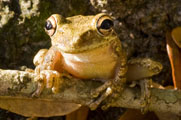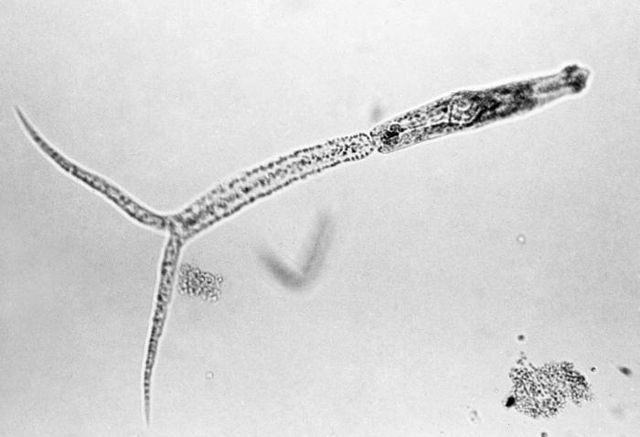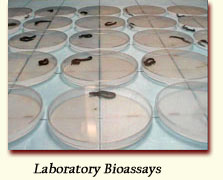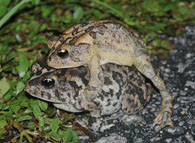

Rohr Laboratory of Ecology and Public Health
| Chemical and Behavioral Ecology |
||
Petri dish design used to assess salamander responses to chemical cues
Amplexus southern toad (Bufo terrestris) |
Research and Publications |
|
Most freshwater organisms live in an environment where visuals cues can often be highly unreliable (due to turbidity, macrophytes, dissolved inorganic and organic compounds, etc.), and thus, chemical communication has become paramount. Chemical cues are also crucial for organisms that do not have well developed “eyes”, such as plants and other animals. Chemical cues can be used to find mates and food and to avoid predators and parasites. We have studied geographic and temporal variation in the production and response to chemical cues, the dependence of these responses on risk levels, sex, age, operational sex ratios, predator diets, and phylogeny. Sample Publications Ehrsam, M., Knutie, S.A., Rohr, J.R. in review. The herbicide atrazine induces hyperactivity and compromises tadpole detection of predator chemical cues. McMahon, T.A., Sears, B.F., Venesky, M.D., Brown, J.M., Deutsch, K., Halstead, N.T., Lentz, G., Tenouri, N., Young, S., Civitello, D.J., Ortega, N., Fites, J.S., Reinert, L.K., Rollins-Smith, L.A., Raffel, T.R., Rohr, J.R. 2014. Amphibians acquire resistance to live and dead fungus overcoming fungal immunosuppression. Nature 511:224-227 (cover photo and featured cover story; Altmetric score of 262, 99th percentile) Delphia, C.M., Rohr, J.R., Stephenson, A.G., De Moraes, C.M., Mescher, M.C. 2009. Effects of genetic variation and inbreeding on volatile production in a field population of horsenettle. International Journal of Plant Sciences. 170: 12-20 Tooker, J.F., Rohr, J.R., Abrahamson, W.G., De Moraes, C.M. 2008. Gall insects can avoid and alter indirect plant defenses. New Phytologist. 178: 657-671 Rohr, J.R., Park, D., Sullivan, A.M., McKenna, M., Propper, C.R., Madison D.M. 2005. Operational sex ratio in newts: field responses and characterization of a constituent chemical cue. Behavioral Ecology. 16:286-293 Sullivan, A.M., Madison, D.M., Rohr, J.R. 2004. Variation in the antipredator responses of three sympatric Plethodontid salamanders to predator-diet cues. Herpetologica. 60:401-408 Rohr, J.R., Madison, D.M., Sullivan, A.M. 2003. On temporal variation and conflicting selection pressures: a test of theory using newts. Ecology. 84:1816-1826 Sullivan, A.M., Madison, D.M., Rohr, J.R. 2003. Behavioural responses by red-backed salamanders to conspecific and heterospecific cues. Behaviour. 140:553-564 Rohr, J.R., Madison, D.M., Sullivan, A.M. 2002. The ontogeny of chemically-mediated antipredator behaviours in newts (Notophthalmus viridescens): Responses to injured and non-injured conspecifics. Behaviour. 139:1043-1060 Rohr, J.R., Madison, D.M., Sullivan, A.M. 2002. Sex differences and seasonal trade-offs in response to injured and non-injured conspecifics in red-spotted newts, Notophthalmus viridescens. Behavioral Ecology and Sociobiology. 52:385-393 Madison, D.M., Sullivan, A.M., Maerz, J.C., McDarby, J.H., Rohr, J.R. 2002. A complex, cross-taxon, chemical releaser of anti-predator behavior in amphibians. Journal of Chemical Ecology. 28:2251-2262 Rohr, J.R., Madison, D.M. 2001. A chemically-mediated trade-off between predation risk and mate search in newts. Animal Behaviour. 62:863-869 Rohr, J.R., Madison, D.M. 2001. Do newts avoid conspecific alarm substances: the predation hypothesis revisited. In: Chemical Signals in Vertebrates (Ed. by Marchlewska-Koj, L. & Müller- Schwarze, D.), NY: Kluwer Academic/Plenum Publishers, 295-304 For a full list of publications, please see the Publications page on this website. |
||

